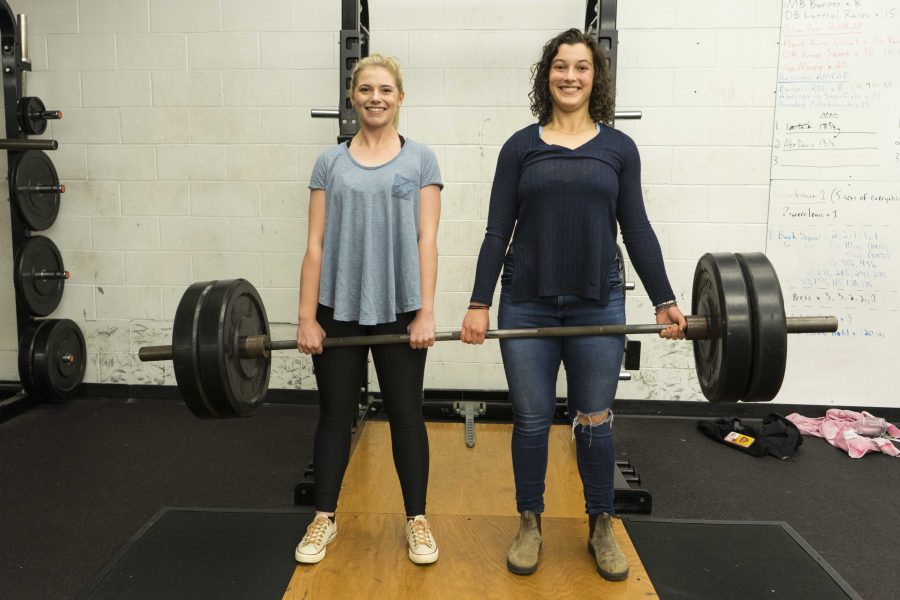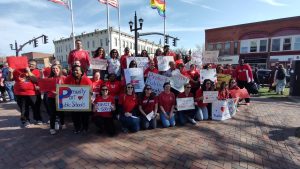In The Locker Room with SAAC Officers
Sandra Kibble (left) and Dana Rae Goldstein
November 4, 2016
In the Locker Room: SAAC Officers
This week, the Review sat down with the Student-Athlete Advisory Committee (SAAC) Communications/Public Relations Officer junior Sandra Kibble and Community Service Officer junior Dana Goldstein to discuss SAAC’s service events thus far, what it has planned for the rest of the year and how the group is working to change the perception of athletes on campus.
This interview has been edited for length and clarity.
Q: How did you become involved with SAAC?
Sandra Kibble: I got involved with SAAC the way I think a lot of people get involved with [it], which is a senior talking you into going. Then I went to one of the meetings and actually really liked it. Last year I was pretty involved with the hype games and then I got elected Communications/[Public Relations] officer this year.
Dana Goldstein: As a first-year I didn’t really notice how much interest I took in athletics on campus and being a good representative for athletics and doing good as a community. Jenny Goldsmith, [OC ’15], made that connection for both of us and encouraged us to come. I’m currently the Community Service Officer and I’m really excited to create strong events that the community enjoys.
Q: What has SAAC done so far this year?
SK: The big event that we’ve had already was Homecoming. That was run by [Communications/Public Relations officer] Sarah Feinberg. We think Homecoming was pretty successful. I’d say that the most successful game during Homecoming was the Kenyon volleyball game. A lot of people came to that, and I think there was a lot of school spirit, even though our team lost. The school spirit that was shown in that game is kind of our precedent for the rest of the year now for hype games.
DG: Track or Treat was on Monday. Every team had a table with a fun activity where we give out candy. Each table kind of represented the home of each team and the kids go “door to door.” It was really cute, we loved seeing the kids’ costumes. We got professors’ kids and kids from surrounding neighborhoods. They advertised the event at all the local elementary schools. It was just a really nice thing we do, even the students had fun.
SK: Also, Buddy Up Tennis is something that SAAC has been continuously doing. It’s been going on for two years. Every Saturday, Oberlin students help children with Down syndrome learn how to play tennis. You don’t have to know how to play tennis to participate. It’s a great way to have fun and be in the community.
DG: We also do Helping Hands in the winter. Every team gets assigned a few kids from Lorain and we receive their wish lists and try our best to get what’s on their lists and give them a really thoughtful gift that they wouldn’t be able to have otherwise. We’re afforded a lot as an athletics department, like clothes, facilities, so it’s the least we can do.
Q: What changes is SAAC trying to make this year?
SK: We started the first officer meeting with mission statements from our chairs, [senior] Maureen Coffey and [senior] Justin Cruz. They talked about how they really want to bring the athletic community together with the non-athletic community, trying to outreach more and make more of a cohesive environment on campus, because there is such a divide. Hopefully we can make more common environments. Instead of having all of our events on North Campus and in the athletics complex, trying to push events more to middle of campus like Wilder Bowl to make them more accessible to people who aren’t athletes and maybe don’t live on North Campus.
DG: Another thing is Play Like a Girl. Last year the coaches were pretty much in charge. It ended up being really successful. There was big turnout. It was really great to offer space and coaching for the community but also for us to get involved in a very hands-on way interacting with people.
Q: What would you say to encourage an athlete to join SAAC?
SK: I think I’ve had a better relationship with athletic administrators. Having different coach connections and being able to build off of those for networking — how many student-athletes get to say that their Athletic Director or their Title IX coordinator really knows them? Building social skills with adults in a professional realm is something that I think SAAC gives a good baseline for.
DG: Another thing is when you see packed games with everyone wearing t-shirts and cheering their hearts out, those things don’t just happen. There are people behind that who work hard to give players on the field and on the court the atmosphere that makes college athletics so special.
SK: SAAC does a big job with trying to change people’s negative connotation of athletes on campus. Showing people that we do more things than play sports. We have a mission statement that involves Special Olympics and community service. We’re not only just there to hype up games and have people support athletes. We want to reach out to the community.
Interview by Jackie McDermott, Sports editor



















